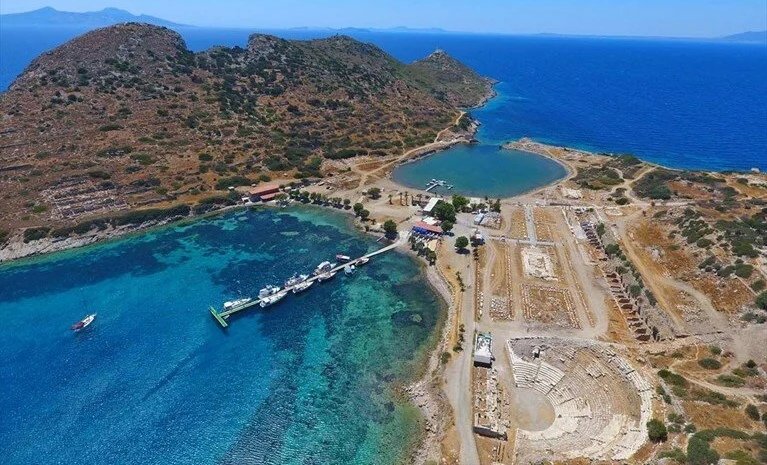The ancient city of Cnidus, home to the astronomer and mathematician Eudoxus, Dr. Euriphon, the artist Polygnotos and the architect of the Alexandria lighthouse, considered one of the seven wonders of the world, Sostratos, attracts attention with its centuries-old splendor.
Knidos is a city dating back 4,000 years. It is located in the most remote point of the Datca Peninsula, in the Mugla region of Turkey and is known for its special location between the Aegean and the Mediterranean. The city has been the cradle of many civilizations in the past. Its locals considered themselves descendants of the Spartans.
The ancient city of Knidos, the “cultural and artistic center of antiquity”, has reopened to visitors after Turkey lifted most measures against Covid-19 on July 1st.
Prof. Dr. Ertekin Doxanalti, Head of the Department of Archeology at Selcuk University, said that they continue to work so that visitors to Knidos can experience the history, culture and natural beauty of this ancient city together. It is also the most southwestern point of Turkey.
The professor explained to the Anatolian Agency that a team of archaeologists is continuing their work in and around the small port of the ancient city this year. Doxanalt noted that the restoration of a city fountain, one of the important structures of Knidos, dating from the first century BC, continues.
Scientists have identified the agora, a theater with 20,000 seats, the odeum, the temple of Dionysus, the temple of the muses, the temple of Aphrodite and a large number of small buildings. The most famous statue of Praxiteles, Aphrodite of Cnidus and a very famous figure of a lion are in the British Museum.
Doxanalti said that a number of the monuments and important structures of Knidos will be restored, as their pieces have been discovered on the site and are to be collected, restored and exhibited.
, Doxanalt gave the following information:
“Knidos is one of the cities that became rich in a short time, using this place and using this wealth in art and culture. Both archeological excavations and historical sources show that Knidos has been inhabited since the 2nd millennium BC. f. The findings of our excavations confirmed this.
The name of the city is known as a cultural and scientific center since ancient times. It has become a place where doctors in the ancient world were trained, at the Knidos Medical School. Only a few sea villas are located on the Greek island of Kos, where the Father of Medicine was born “- Hippocrates.
We can say that Knidos is an important center, not only in the field of medicine, but also in the field of astronomy and law. Archaeologists suggest the city was abandoned due to the weakening of the central administration, earthquakes and natural disasters in the 7th century. Doxanalti said that Knidos was also considered a center of tourism, culture and art in ancient times.









